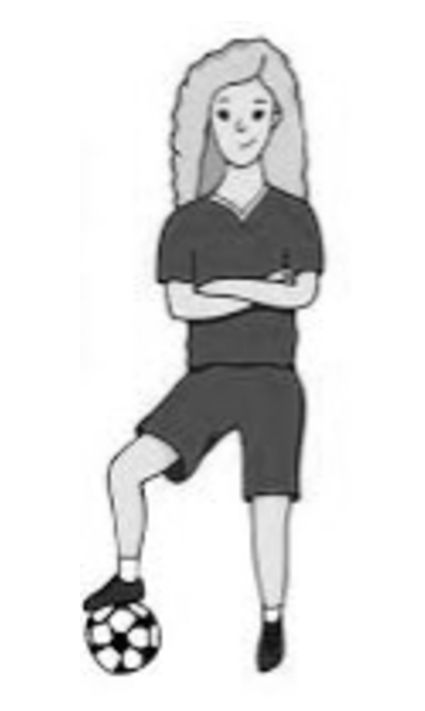Balance and Proprioception throughout our Ages
- InsideOut

- Dec 1, 2024
- 4 min read
Definitions:
Balance:
"Balance is the ability to keep your body steady without falling"
Proprioception:
"Proprioception is the perception or awareness of the position and movement of the body"
The ability to balance is far too easily taken for granted, however, when we loose it, we only then can fully appreciate its value (as with so many things in life).
So how does it work?
Balance is trained and is a complex process that requires coordination between muscles and sensory information from your eyes, inner ears, and sensors in your muscles and joints. Better proprioception means better balance but also better control and acuracy in action.
Proprioception is very technical. It is commonly referred to as a sixth sense. I going to try to simplify it. Our peripheral nerves send all kinds of sensory signals (information) to the central nervous system (reaching in the brain). All these messages are then interpreted by the brain and based of our needs and safety, our brain send back millions of messages to make necessary adjustments.
How can it be affected or damaged?
Any injuries along the path from the peripheral (including ears, eyes and extremities) to the central (spinal cord, brain) and back to the peripheral nervous system as well as our musculoskeletal system, may affect our balance or proprioception. Because this is such a wide variety of areas, our balance and proprioception is quite easily affected. The commonest reasons are muscular/joint injuries (like a sprained ankle) and nerve injuries (neuropathy). More serious reasons for proprioceptive loss are brain injuries or conditions (neurological disorders or strokes for example). I would be remis not to mention that much of having good or bad proprioception is also affected by our inherited genetics, some people are just clumsy (like me!).
As we age, our bodies may not be as strong or we have lived through many micro and sometimes major injuries. We may recover, but often we don't regain all that was lost. Also, as we age, the nervous system can slow down or have "connectivity" issues, much like an electrical system, components wear and tear. These are common reasons for why our balance and proprioception is steadily reduced as we grow older.
Struggling with balance can be very frustrating. Sometimes the reason is obvious (like an injury) and sometimes it is a slow decline, one we only notice when we loose it. Here are a few tips on how to regain/retrain our balance, or better yet, improve and maintain our balance, especially as we age. Healthy habits that can create lifelong change and prevent falls and sprains!
Firstly, if you are injured - allow adequate rest and correct healing of your injury first, if it heals poorly, you will likely take much longer to regain balance. A common example is a sprained ankle. When you sprain your lateral ankle and don't position and protect it during healing, the tissue can heal over stretched, if you then have an increased instability, balance is much more difficult to regain.
Protect/brace initially as needed
Exercises should be guided by you injury, instability and pain
Seek professional help in this phase to insure an accurate diagnosis
Strengthen. All the weaker, more vulnerable muscles.
Pain is a significant barrier to proprioception, seek professional help if you have an injury or undiagnosed pain.
Function first. As soon as possible, work on moving as normally as possible, avoiding any limp or asymmetry, for instance, smaller but better steps.
Exercises are most effective if trained throughout the full range of the joint, most injuries occur on stretch or end of range. Controlled and slow movements are best initially and high load, ballistic training is final stage rehab.
Prevention is better than cure! Proprioceptive and balance retraining should be a part of our everyday routine, not just when we have had an injury!
Great places to get a few balance exercises in include while waiting in a queue, stand on on leg and count up as far as you can, always repeat both sides and every time you waiting for a kettle or appliance finish working, do a single leg heel raise.
Include 10 minutes a day of balance exercises, whether during an structured class or on you off days!
My favorite examples of balance exercises include:
Take a walk on the beach!
Hiking and walking in the great outdoors will always strengthen and improve you balance, if you a beginner, or you have balance impairments start with a hiking stick
Specific exercises you can do also include:

Single leg heel raises:
Standing on one leg, controlled posture
Hold onto a chair or counter as needed
Come up onto your toes slowly as far as you can and down again
Repeat 5-10x (as tolerate) and repeat on your other leg

Single leg dead lifts:
Standing on one leg, controlled posture
As you bend forward with/without a free weight, lift you back leg in line with your body
Go only as far as you can without loosing control
Return to standing
Playing with a ball:

Standing with a soccer ball or similar
Dribble the ball in different directions
Forward and back
Side to side
Semi circles, clockwise or anticlockwise
Change legs
So there you have it! If you don't keep using it, you will loose it!
Comments